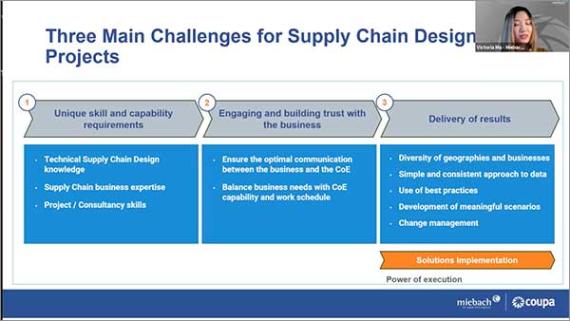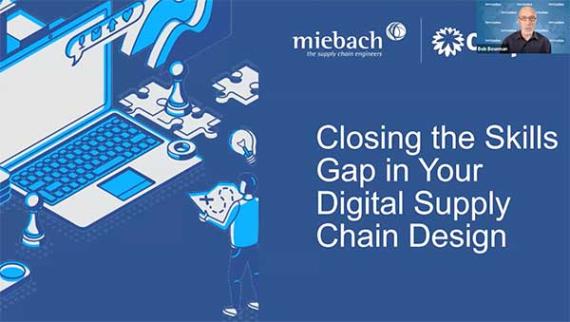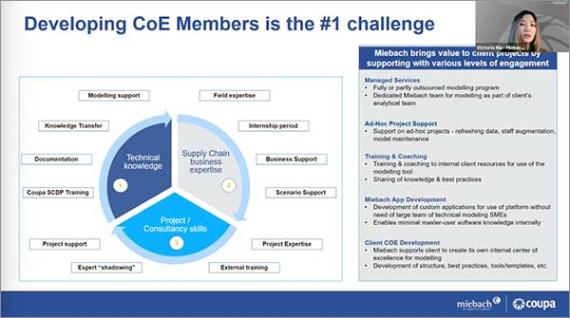Closing the Skills Gap That Holds Back Your Digital Supply Chain Design
While adopting new digital supply chain technology results in dramatic efficiencies within operations and logistics, it demands supply chain practitioners have specialized skills - this is where we encounter the skills gap. Learn how to bridge this skills gap in this on-demand webinar.
Coupa’s Matt Tichon and Miebach’s Victoria Ma shared practical tips, ideas, and examples about how joint customer Eaton managed their skills gap to develop a Center of Excellence, including:
- Project initiation: align skills, technology, business outcomes and teams
- Developing team skills and career paths: how to bring individuals and organizations together for effectiveness
- Building decision-making maturity: break down silos, build up team collaboration and capabilities, and deliver value from the CoE.
Leading companies have adopted modeling and simulation technologies, leveraging a digital twin of their respective supply chains, allowing them to unlock benefits that otherwise would have been locked in by design.
The next step in supply chain success is to ensure your organization develops a center of excellence with a team of supply chain professionals possessing the right skill set and positioned to collaborate and implement a best-in-class resilient supply chain. Learn how in this webinar.


FAQ



